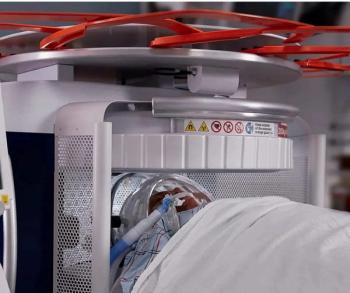
MR diffusion detects microscopic brain damage in early Alzheimer’s
Researchers have developed a new computer-aided analysis technique to identify early cellular damage in Alzheimer’s disease, according to a study in the October issue of Radiology.
Researchers have developed a new computer-aided analysis technique to identify early cellular damage in Alzheimer's disease, according to a study in the October issue of Radiology.
"With increasing longevity among the population, the incidence of AD is expected to rise rapidly, creating a great burden not only for patients and their families, but also for society," said author Min-Ying Su, Ph.D., an associate professor in the department of radiological sciences and the Center for Functional Onco-Imaging at the University of California, Irvine. "Our methods may enable earlier diagnosis of AD, allowing earlier intervention to slow down disease progression."
As AD progresses, cell membranes in the brain may be damaged, allowing water molecules to move throughout the brain more freely. This phenomenon can disrupt neural processes and cause neuron cells to die, leading to brain atrophy. This process of cellular damage causes an increase in the apparent diffusion coefficient (ADC), which is a measurement used to study the distribution of water in the brain.
Thirteen elderly patients with mild cognitive impairment (MCI) were enrolled in the study. Patients with MCI are at high risk for developing AD. These 13 patients and 13 elderly control subjects underwent MRI of the brain and performed recall tasks. On MRI, ADC values were measured in gray matter and white matter regions by using the computer-aided analysis program. Findings were compared between patients and healthy controls.
The computerized mapping technique allowed researchers to evaluate ADC values in large regions of the brain. In patients with MCI, researchers identified regions of brain atrophy and increased water content in white matter areas. High ADC values were also found in the hippocampus, temporal lobe gray matter, and the corpus callosum, which connects the two cerebral hemispheres. The ADC values in the hippocampus were significantly correlated with worse memory performance scores.
"The results have supported our objective to develop a computer-based analysis technique that can analyze different regions in the entire brain, to provide a comprehensive evaluation of cellular changes," Su said.
Until now, ADC values from gray matter in various lobes of the brain have not been reported, due to the difficulty of obtaining measurements in these regions. This new technology may allow researchers to learn more about how AD develops in the brain and to cultivate better treatment strategies for patients based on their individual cognitive needs.
"Patients with MCI who are very likely to progress to AD may start early treatment interventions, while patients who may remain stable with MCI can be spared from treatment and the associated side effects," Su said. "The diagnostic accuracy in identifying AD needs to be greatly improved."
For more information from the Diagnostic Imaging archives:
Newsletter
Stay at the forefront of radiology with the Diagnostic Imaging newsletter, delivering the latest news, clinical insights, and imaging advancements for today’s radiologists.

























